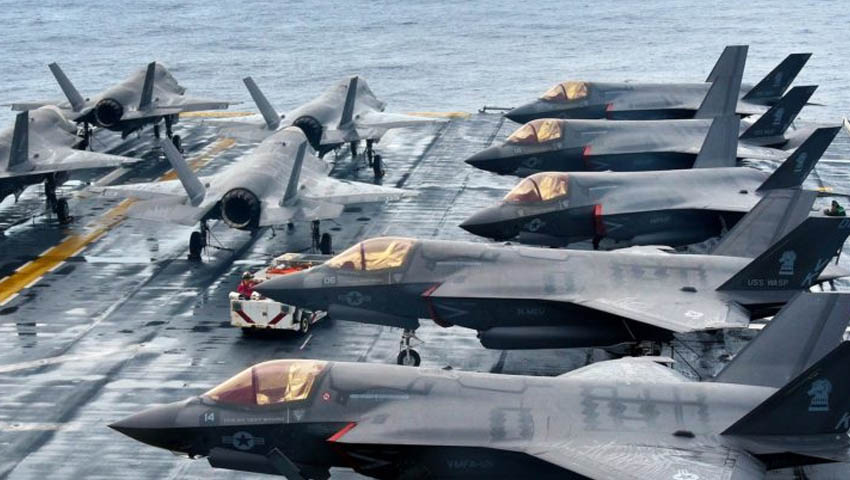The US Marines has announced that its fleet of F-35B STOVL fighters will be the first fixed-wing aircraft to fly from Japan’s upgraded Izumo Class large-deck amphibious warfare ships.
Increasingly, multi-domain air power plays an important role in the efficacy of naval forces and serves as a key component in both the force structure and capability development plans for Japan, South Korea and Australia – these similarities support not only closer relationships between the two nations that share unique geo-political and strategic similarities, but also provide the opportunity to develop robust force structures to respond to the rapidly evolving regional strategic environment.
The recent announcement that Japan has initiated the acquisition of its own fleet of short take-off, vertical landing (STOVL) F-35B Joint Strike Fighters under the operational jurisdiction of the Japan Air Self-Defense Force (JASDF) has paved the way for the US and Japan to formalise a 'cross-decking' relationship enabling the US to support the capability development for the Japan Maritime Self-Defense Force (JMSDF).
It is expected that it will take approximately five years from the initial budget and acquisition to deployment for the F-35B to achieve full operating capability with JASDF – which has prompted the Japanese government to formally request the support of the US Marine Corps "for co-operation and advice on how to operate the fighter on the deck of the modified ships".
Japanese newspaper The Asahi Shimbun quoted Japan's Defense Minister, Takeshi Iwaya, stating, "The Izumo Class aircraft carrier role is to strengthen the air defence in the Pacific Ocean and to ensure the safety of the Self-Defense Force pilots. Regarding the possibility of the arrival and departure of US military aircraft, There may be no runway available for the US aircraft in an emergency. I cannot say that the US F-35B should never be placed on an [JMSDF] escort vessel."
Promoting greater interoperability and duplication of capabilities serves to support the broader regional order, while also serving to share the tactical and strategic burden between key US allies at a time when the current US administration is placing increasing emphasis on allies sharing the financial, personnel and material burden of maintaining the post-Second World War economic, political and strategic order.
Recognising this and Australia's continued role as a critical ally in the region, there is potential scope for allies including Japan, the US and UK in conjunction with Australian investment to support the modernisation and upgrades of the two Canberra Class vessels to serve as additional launch points, maintenance and sustainment support vessels for allied fleet airpower.
More broadly, the concept of 'cross-decking' also provides avenues for the Royal Australian Air Force and/or Royal Australian Navy to embed both support and aircrew within allied naval aviation operations to enable Australia to rapidly develop its own such capability over the course of a number of years, should the need arise for Australia to reintroduce its own fixed-wing naval aviation capabilities.
Japan's geo-strategic realities have rapidly evolved since the end of the Cold War, when the US could effectively guarantee the security of the island nation. Accordingly, the Japanese government has responded with a period of unprecedented defence budgets as the pre-war power seeks to shake off the chains of the pacifist constitution enforced upon it by the US, UK, Australia and other allies following the end of the war in the Pacific.
In response, Japanese Prime Minister Shinzo Abe has repeatedly earmarked increased funding for the nation's defence budget, expanding the capabilities of the Japanese Self-Defense Force to operate independently of direct US support – establishing the nation as an emerging great power with traditional great power style strategic economic, diplomatic and military capabilities.


